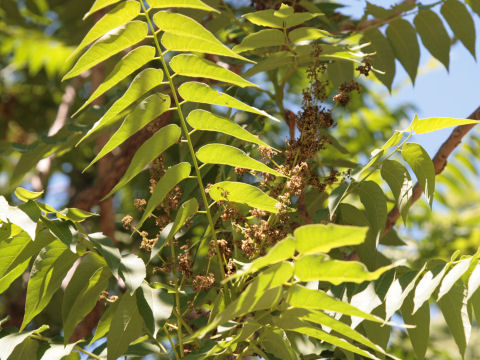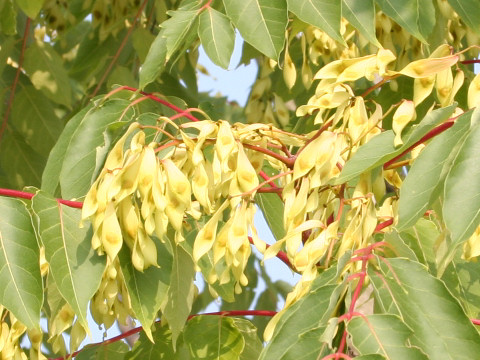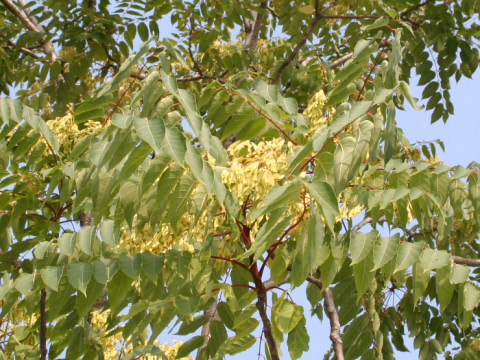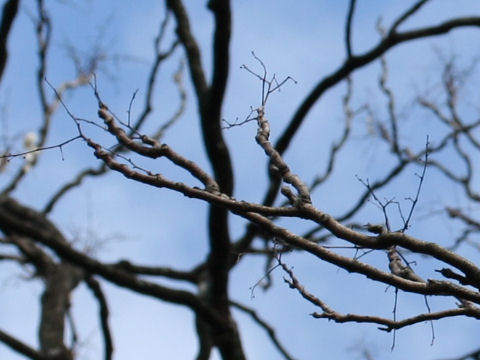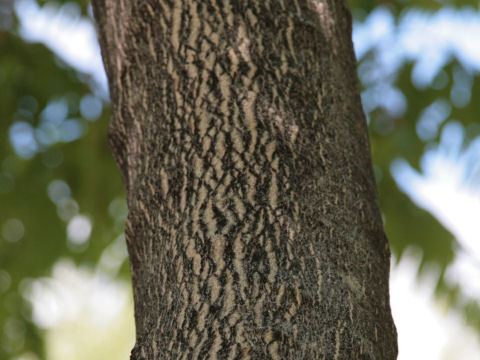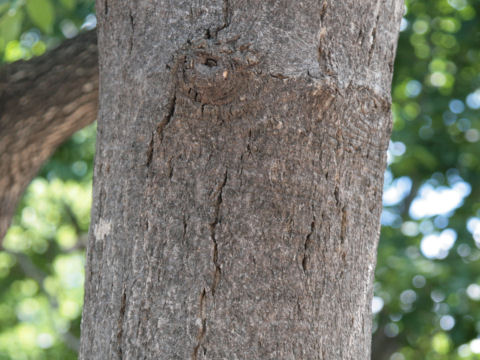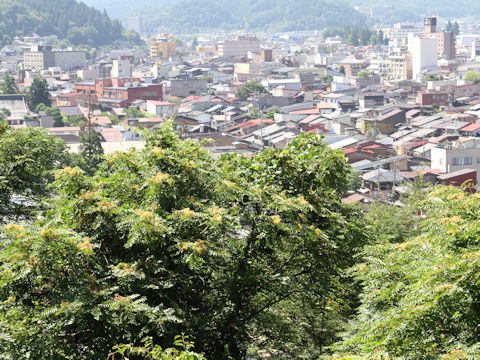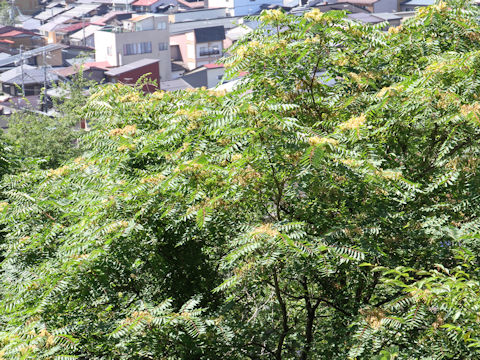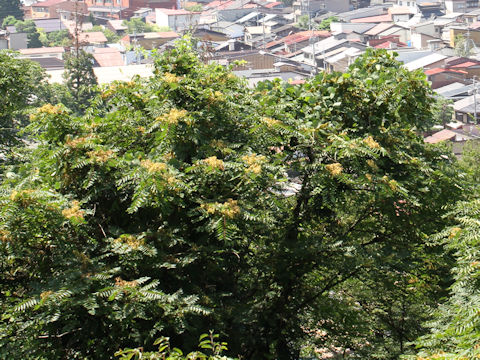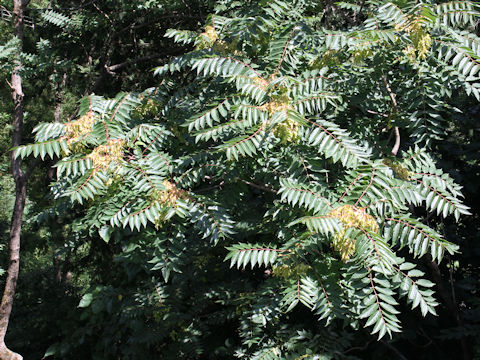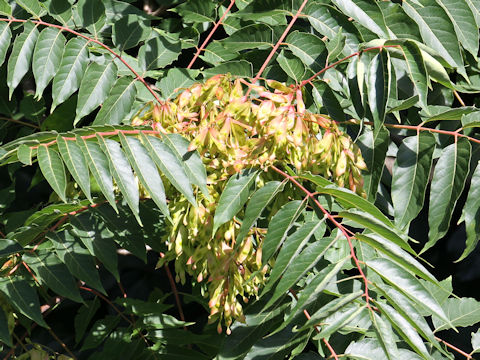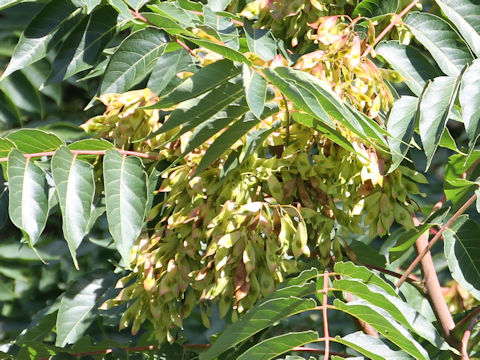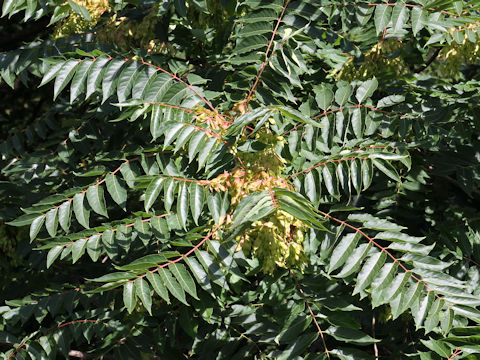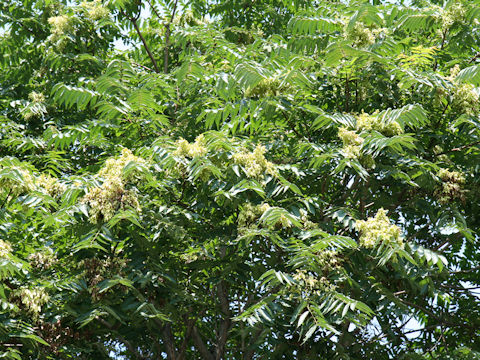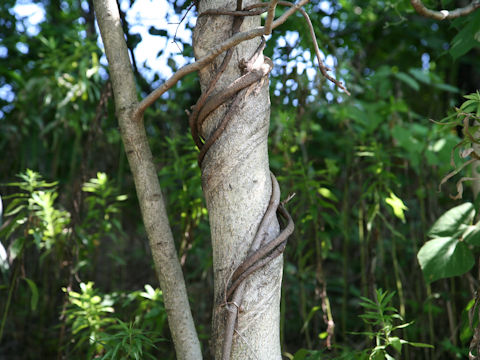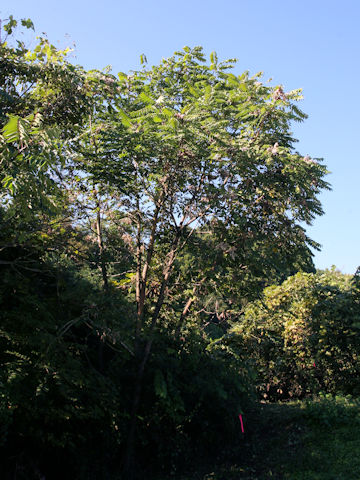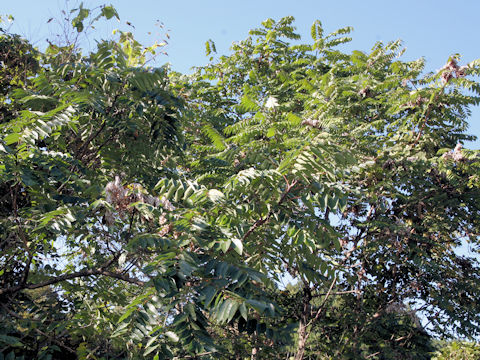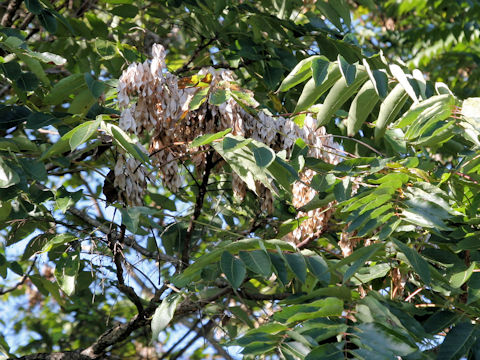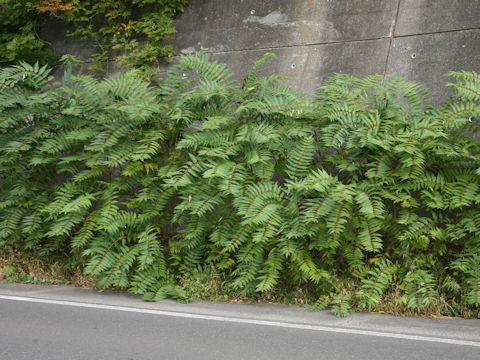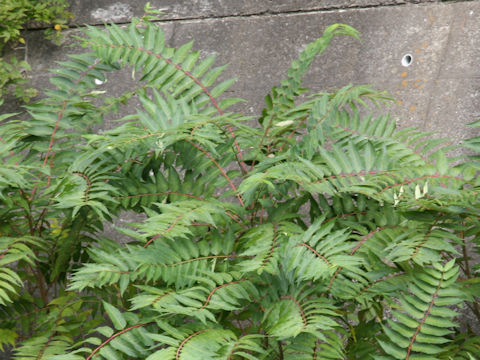
|
|
|
|
−− もっと見る(Show more)−−
−− 閉じる(Close) −−
|
|
|
|
中国が原産で、わが国へは明治時代の初めに渡来しました。高さは25メートルほどになり、大きな奇数羽状複葉が互生します。小葉は長卵形で6〜16対、先端が細く尖り葉柄があります。雌雄異株で、6月ごろに円錐花序をだし、緑白色の小さな花を咲かせます。果実は翼果です。「うるし」とは異なりかぶれないので、公園樹や街路樹に植栽されます。別名で「しんじゅ(神樹)」、樹皮は殺虫剤に利用されます。中国語では「臭椿(chou chun)」と呼ばれます。 |
|
|
ニガキ科ニワウルシ属の落葉高木で、学名は Ailanthus altissima。英名は Tree of heaven。 |
|
|
The Tree of heaven (Ailanthus altissima) belongs to Simaroubaceae (the Picrasma family). It is a tall decidous tree that is native to China and it was introduced into Japan in the early days of Meiji Era (1868-1912). This tree can reach about 25 m in height and bear large impari-pinnatsmall, e compound alternately. The leaflets are long-ovate, 6-16 pairs, with acute tips and petioles. It is a dioecious. The panicles are borne and bloom greenish white flowers in June. The fruits are samara. This tree is not causing irritation to the skin, and used as a park tree or a street tree. Also the barks are used as a insecticide. In Chinese, it is called "臭椿" (chou chun). |
|
|
[上・中4〜5] アメリカ・テキサス州「フォートワース植物園」にて、2006年04月29日撮影。(photo by Jon Suehiro) [中1・中2] 京都府宇治市「宇治市植物公園」にて、2005年08月05日撮影。 [中3] 京都市左京区「京都府立植物園」にて、2006年02月02日撮影。 [中6〜中12] 岐阜県高山市八幡町にて、2016年08月20日撮影。 [中13・中14] 大阪府四條畷市「清滝峠」にて、2006年08月04日撮影。 [中15〜中17] 宮城県村田町沼田にて、2024年10月12日撮影。 [中18・下] 宮城県七ヶ宿町「七ヶ宿ダム」にて、2024年10月26日撮影。 |

|
|
Shu Suehiro |
